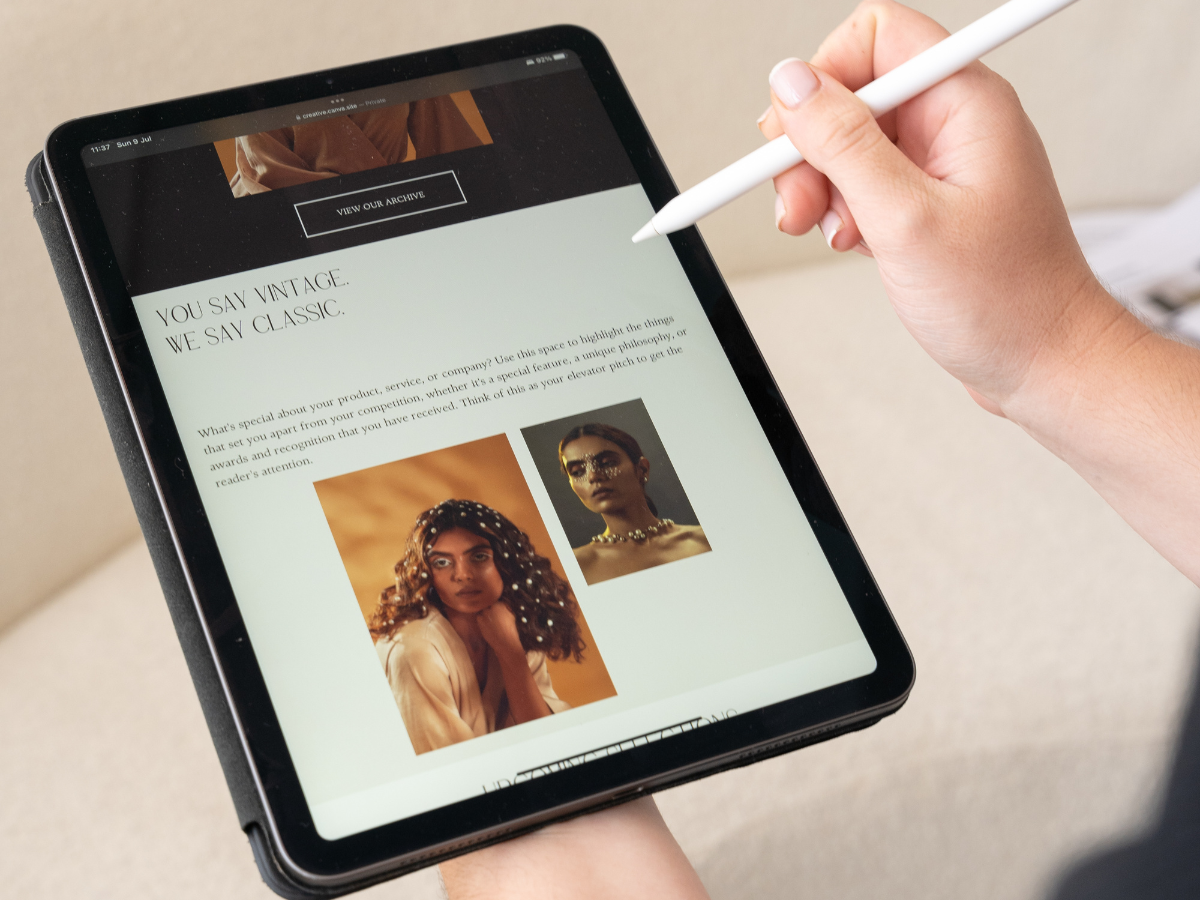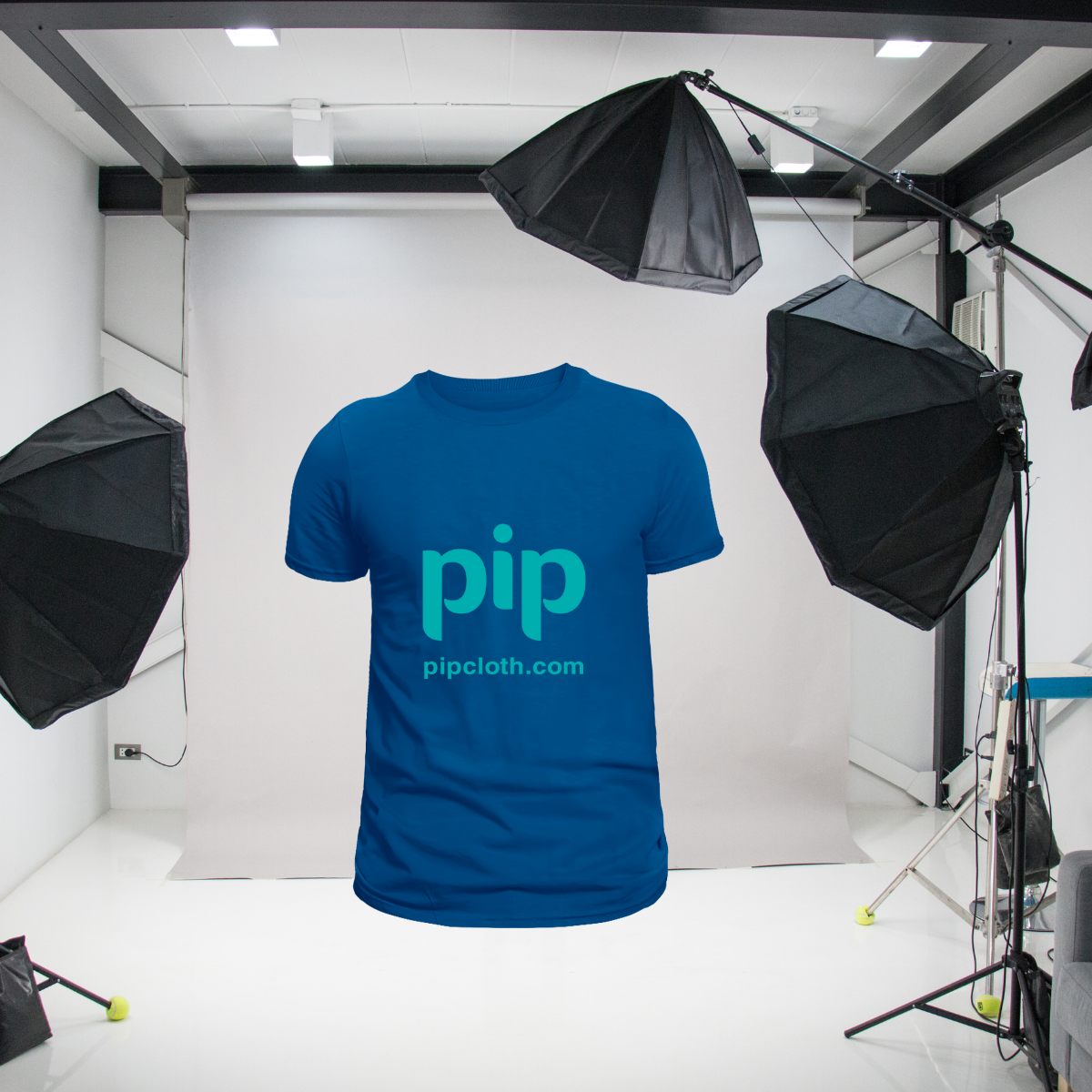Crafting a Thriving T-Shirt Business: Mastering Branding and Design Strategies
Define Your Brand Identity
Establishing a strong brand identity is crucial for success in the t-shirt industry. Develop a clear mission statement, identify your target audience, and create a unique brand voice that resonates with your customers. Consistency across all aspects of your brand is key.
Create Eye-Catching T-Shirt Designs
Your t-shirt designs should be visually appealing, memorable, and aligned with your brand identity. Consider current trends, but also strive for timeless designs that will remain relevant. Collaborate with talented artists or designers to bring your ideas to life.
Choose the Right Fabric and Printing Methods
Select high-quality, comfortable fabrics that suit your target market and design style. Research various printing methods, such as screen printing, direct-to-garment (DTG) printing, and heat transfer, to determine which option best fits your needs and budget.
Develop a Strong Online Presence
In today’s digital age, having a strong online presence is essential. Create a user-friendly website that showcases your t-shirt designs, tells your brand story, and makes purchasing easy. Utilize social media platforms to engage with your audience, share behind-the-scenes content, and promote your products.
Build a Loyal Customer Base
Foster a loyal customer base by providing exceptional customer service, offering promotions and rewards, and regularly engaging with your followers. Encourage customers to share photos wearing your t-shirts and feature user-generated content on your website and social media channels.
Collaborate and Network
Collaborate with influencers, other brands, and artists to expand your reach and tap into new audiences. Attend industry events and trade shows to network with potential partners and stay up-to-date on the latest trends and innovations in the t-shirt market.
Continuously Evolve and Innovate
Stay ahead of the competition by continuously evolving and innovating your t-shirt designs and branding strategies. Monitor market trends, listen to customer feedback, and be willing to adapt to changes in the industry to ensure long-term success.
By focusing on strong branding, eye-catching designs, quality materials, and a customer-centric approach, you can build a thriving t-shirt empire that stands out in a competitive market. Continuously refining your strategies and staying attuned to your target audience’s needs will help you achieve long-term success in the t-shirt industry.
Introduction
Starting a t-shirt business has become an increasingly popular path to entrepreneurship, thanks to the rise of e-commerce and print-on-demand technologies. However, with so many t-shirt brands vying for attention in a crowded market, it takes more than just a clever design to build a thriving t-shirt empire. In this article, we’ll dive into the secrets behind successful t-shirt branding and design, drawing on real-world examples and data-driven insights to help you create a brand that stands out and resonates with your target audience.
- The global custom t-shirt printing market is expected to reach $3.1 billion by 2025, growing at a CAGR of 6.3% from 2020 to 2025 (Source: Grand View Research)
- 60% of Americans own more than 10 t-shirts in their wardrobe (Source: Statistic Brain)
- Successful t-shirt brands like Johnny Cupcakes and Life is Good have built multi-million dollar empires through strong branding and design
Defining Your Unique Brand Identity
- 77% of consumers make purchases based on a brand name (Source: Crowdspring)
- Consistent brand presentation across all platforms can increase revenue by 23% (Source: Lucidpress)
Before you start designing your t-shirts, it’s crucial to establish a clear and compelling brand identity. Your brand identity encompasses your mission, values, personality, and visual elements that make your t-shirt business unique and memorable. Take Life is Good, for example. Founded in 1994 by brothers Bert and John Jacobs, the brand’s mission is to spread positivity and optimism through its products and messaging. Their iconic stick figure logo and uplifting slogans have become instantly recognizable, helping the company grow into a $100 million business.
To craft your own brand identity, start by answering these key questions:
- What is your brand’s mission and purpose?
- Who is your target audience, and what do they value?
- What makes your brand unique compared to competitors?
- What personality and tone do you want to convey through your branding?
Once you have a clear understanding of your brand identity, you can develop a cohesive visual language that reflects your values and resonates with your target customers. This includes your logo, color palette, typography, and imagery.

Mastering the Art of T-Shirt Design
- 70% of consumers believe that product design is a key factor in their purchasing decisions (Source: Adobe)
- Eye-catching designs are the top factor that influences customers to purchase graphic tees (Source: Contrado)
Compelling t-shirt designs are the heart and soul of your brand. To create designs that not only look great but also sell well, it’s essential to understand your target audience and current design trends. Research popular themes, styles, and colors in your niche, and gather inspiration from various sources like fashion blogs, Instagram, and Pinterest.
When designing your t-shirts, keep these best practices in mind:
- Use high-quality graphics and illustrations that are clear and easy to read
- Incorporate typography that aligns with your brand personality and is legible from a distance
- Choose a color palette that reflects your brand identity and appeals to your target audience
- Ensure your designs are versatile and can be printed on various t-shirt colors and styles
- Consider negative space and composition to create visually balanced designs
Collaborating with talented designers and artists can also help elevate your t-shirt designs and bring fresh perspectives to your brand. For example, Johnny Cupcakes, a successful t-shirt brand known for its playful cupcake-themed designs, often partners with guest artists and brands to create limited-edition collections that generate buzz and drive sales.

Mastering the Art of T-Shirt Photography
Selecting the Right T-Shirt Blanks and Printing Methods
- The global market for organic cotton is expected to reach $15.76 billion by 2027, growing at a CAGR of 16.2% from 2020 to 2027 (Source: Allied Market Research)
- 60% of consumers prefer soft, comfortable fabrics when purchasing t-shirts (Source: Cotton Incorporated)
The quality and feel of your t-shirts are just as important as the designs printed on them. When choosing t-shirt blanks, consider factors like:
- Fabric composition: 100% cotton, blends, or tri-blends
- Weight: Lightweight (4.3 oz), midweight (5.3 oz), or heavyweight (6.1 oz)
- Fit: Unisex, men’s, women’s, or youth sizes
- Color options: Variety of colors available
- Brand reputation: Reliable suppliers like Bella+Canvas, Gildan, and American Apparel
In addition to selecting high-quality blanks, it’s important to choose the right printing method for your designs and business needs. The most common printing methods for t-shirts include:
| Printing Method | Pros | Cons |
| Screen Printing | Durability, cost-effective for large runs, vibrant colors | Higher setup costs, longer turnaround times, limited design complexity |
| Direct-to-Garment (DTG) | High detail and color accuracy, low setup costs, print-on-demand capabilities | Higher per-unit costs, slower production times, potential wash durability issues |
| Heat Transfer | Versatility, quick turnaround times, low setup costs | Limited durability, potential for cracking or peeling, reduced color vibrancy |
Consider your design complexity, order quantities, and budget when deciding on the best printing method for your t-shirts.
Building a Strong Online Presence
- 75% of consumers judge a brand’s credibility based on its website design (Source: Stanford Web Credibility Research)
- 93% of online experiences begin with a search engine (Source: SEJ)
In today’s digital age, having a strong online presence is essential for any t-shirt business. Your website serves as your virtual storefront, allowing customers to browse your designs, learn about your brand, and make purchases. To create a user-friendly and engaging website, focus on:
- Intuitive navigation: Make it easy for customers to find what they’re looking for with clear categories and search functionality
- High-quality product images: Showcase your t-shirt designs with professional product photos and mockups
- Compelling product descriptions: Write detailed, persuasive descriptions that highlight the unique features and benefits of your t-shirts
- Customer reviews and social proof: Include customer testimonials, reviews, and user-generated content to build trust and credibility
Optimizing your website for search engines (SEO) is also crucial for driving organic traffic and improving your visibility in search results. Conduct thorough keyword research to identify relevant terms and phrases your target audience is searching for, and incorporate them naturally into your website content, product descriptions, and meta tags.

Implementing Effective Marketing Strategies
- Influencer marketing campaigns can generate 11x higher ROI than traditional advertising (Source: TapInfluence)
- 93% of marketers use social media for business (Source: Hootsuite)
To build a successful t-shirt empire, you need to get your brand in front of the right audience. Develop a multi-channel marketing strategy that includes tactics like:
- Social media marketing: Share engaging content, run contests and giveaways, and collaborate with influencers to expand your reach
- Email marketing: Build an email list of subscribers and send targeted campaigns promoting new designs, sales, and exclusive offers
- Paid advertising: Use platforms like Google Ads, Facebook Ads, and Instagram Ads to target specific demographics and interests
- Influencer partnerships: Partner with influencers and brand ambassadors who align with your brand values and have a dedicated following in your niche
For example, Ivory Ella, a t-shirt brand that donates a portion of its profits to elephant conservation, has built a massive following on social media through a combination of user-generated content, influencer partnerships, and cause-driven messaging. By leveraging the power of social proof and aligning with a charitable cause, the brand has created a loyal community of customers who are passionate about both fashion and making a difference.

Fostering Customer Loyalty and Retention
- Acquiring a new customer can cost 5x more than retaining an existing one (Source: Invesp)
- 93% of customers are likely to make repeat purchases with companies that offer excellent customer service (Source: HubSpot Research)
Building a loyal customer base is key to the long-term success and growth of your t-shirt business. To foster customer loyalty and encourage repeat purchases, focus on providing exceptional customer service and creating a memorable brand experience. This can include:
- Responding promptly to customer inquiries and complaints
- Offering easy returns and exchanges
- Providing personalized recommendations based on customer preferences
- Rewarding loyal customers with exclusive discounts, early access to new designs, or loyalty points programs
Another effective strategy for building customer loyalty is to create a sense of community around your brand. Encourage customers to share photos of themselves wearing your t-shirts on social media, and feature user-generated content on your website and marketing channels. You can also foster a sense of belonging by hosting events, launching a brand ambassador program, or creating exclusive online communities for your most engaged customers.
Conclusion
Building a successful t-shirt empire requires a combination of strong branding, compelling designs, quality products, and effective marketing strategies. By defining your unique brand identity, mastering the art of t-shirt design, selecting the right materials and printing methods, and fostering customer loyalty, you can create a thriving business that stands out in a crowded market.
Remember, building an empire takes time, dedication, and continuous improvement. Stay up-to-date with the latest trends and technologies in the t-shirt industry, and always be willing to adapt and evolve your strategies based on customer feedback and market demands.
With passion, perseverance, and a commitment to delivering exceptional products and customer experiences, you can turn your t-shirt business dreams into a reality and build a brand that leaves a lasting impact on your customers and the fashion world.
FAQ Section:
Q1: How can a t-shirt brand ensure consistency in product quality across different manufacturing partners?
Establishing clear quality control standards and conducting regular audits of your manufacturing partners is essential for maintaining consistent product quality. Develop detailed product specifications, including fabric weight, dimensions, stitching requirements, and color tolerances. Regularly inspect random samples from each production run to ensure they meet your standards. Consider implementing a quality assurance checklist that covers all critical aspects of the finished product, from fabric and construction to printing and labeling.
Q2: What are some eco-friendly and sustainable options for t-shirt materials and packaging?
Sustainable t-shirt materials include:
- Organic cotton: Grown without harmful pesticides or chemicals, reducing environmental impact
- Recycled polyester: Made from post-consumer plastic bottles, reducing waste and conserving resources
- Bamboo: A fast-growing, renewable resource that requires less water and pesticides than conventional cotton
- Hemp: A durable, biodegradable fiber that grows quickly and requires minimal water and pesticides
For eco-friendly packaging, consider using:
- Recycled or recyclable mailers and boxes
- Biodegradable or compostable poly bags
- Recycled or recyclable hang tags and labels
- Soy-based or water-based inks for printing
Q3: How can a t-shirt brand leverage user-generated content (UGC) to build brand awareness and engagement?
Encourage customers to share photos of themselves wearing your t-shirts on social media, and feature the best UGC on your website and marketing channels. Run social media contests and giveaways that incentivize customers to create and share content featuring your products. Implement a branded hashtag strategy to make it easy for customers to discover and engage with your brand. Repost and share UGC across your social media profiles, tagging the original creators to show appreciation and build relationships with your most loyal customers.
Q4: What are some best practices for creating inclusive and diverse t-shirt designs and marketing campaigns?
To create inclusive and diverse t-shirt designs and marketing campaigns:
- Offer a wide range of sizes and fits to accommodate different body types and preferences
- Feature models and influencers of various ages, races, ethnicities, and body types in your product photos and marketing materials
- Avoid designs or slogans that could be considered offensive, discriminatory, or culturally insensitive
- Collaborate with diverse designers, artists, and influencers to bring fresh perspectives and representation to your brand
- Use inclusive language in your product descriptions, website copy, and marketing messages
Q5: How can a t-shirt brand effectively manage inventory and minimize stockouts or overstock situations?
Implement an inventory management system that tracks stock levels in real-time, integrating sales data from all channels (e.g., website, retail stores, wholesale partners). Set up automated alerts for low-stock items and reorder points based on historical sales data and lead times. Regularly conduct inventory audits to ensure accuracy and identify any discrepancies. Analyze sales data and trends to forecast demand and optimize stock levels for each product and size. Consider using a just-in-time (JIT) inventory model or print-on-demand services for slower-moving or niche products to minimize carrying costs and risk of overstock.
Q6: What are some strategies for expanding a t-shirt brand into international markets?
Before expanding into international markets, conduct thorough research on:
- Target market preferences, trends, and competitive landscape
- Cultural differences and sensitivities that may impact design and messaging
- Local regulations, taxes, and import duties
- Shipping and logistics challenges and costs
Adapt your website and marketing materials for each target market, considering language, currency, and local payment preferences. Partner with local influencers, retailers, or distributors who can help you navigate the market and build brand awareness. Test the market with a small, targeted product launch before investing in larger inventory or marketing campaigns. Consider using international fulfillment centers or print-on-demand services to minimize shipping costs and delivery times for customers.
Q7: How can a t-shirt brand create a successful customer loyalty program?
A successful customer loyalty program should:
- Offer exclusive rewards, discounts, or early access to new products for members
- Use a points-based system that incentivizes repeat purchases and engagement
- Provide personalized recommendations and offers based on customer preferences and purchase history
- Integrate with your e-commerce platform and marketing channels for seamless user experience
- Offer tiered benefits or VIP status for your most loyal and high-value customers
Promote your loyalty program through email marketing, social media, and on-site notifications. Regularly review and optimize your program based on customer feedback and engagement metrics.
Q8: What are some best practices for creating effective t-shirt product descriptions that drive sales?
When writing t-shirt product descriptions:
- Highlight the unique features and benefits of each product, such as fabric quality, fit, and design details
- Use persuasive and action-oriented language that encourages customers to make a purchase
- Incorporate relevant keywords and phrases to improve search engine visibility
- Provide detailed size and fit information, including measurements and model photos for reference
- Use bullet points or short paragraphs to make the description easy to scan and read
Include customer reviews, testimonials, or social proof to build trust and credibility. Optimize your product descriptions for mobile devices, ensuring they are concise and easy to read on smaller screens.
Q9: How can a t-shirt brand create a successful influencer marketing campaign?
To create a successful influencer marketing campaign:
- Identify influencers who align with your brand values, aesthetic, and target audience
- Set clear goals and KPIs for your campaign, such as increased brand awareness, website traffic, or sales
- Develop a creative brief that outlines your campaign objectives, key messages, and content guidelines
- Negotiate fair compensation and deliverables with each influencer, considering their reach, engagement, and content quality
- Provide influencers with high-quality product samples, visual assets, and talking points to ensure consistent brand messaging
Monitor and track the performance of your influencer campaign using unique discount codes, UTM parameters, or branded hashtags. Engage with influencer content and their followers to build relationships and drive further engagement.
Q10: What are some strategies for retaining and motivating top talent in a growing t-shirt business?
To retain and motivate top talent in your t-shirt business:
- Offer competitive compensation and benefits packages that align with industry standards and employee experience
- Provide opportunities for professional development, skill-building, and career advancement within your organization
- Foster a positive and inclusive company culture that values open communication, collaboration, and work-life balance
- Recognize and reward employee achievements and contributions through bonuses, promotions, or public acknowledgment
- Encourage employee feedback and ideas, and involve them in decision-making processes when appropriate
Conduct regular performance reviews and one-on-one meetings to discuss employee goals, challenges, and job satisfaction. Offer flexible work arrangements, such as remote work options or flexible schedules, to accommodate individual needs and preferences.
By addressing these additional questions and topics, readers will have a more comprehensive understanding of how to build and scale a successful t-shirt business, from product development and marketing to operations and talent management.





